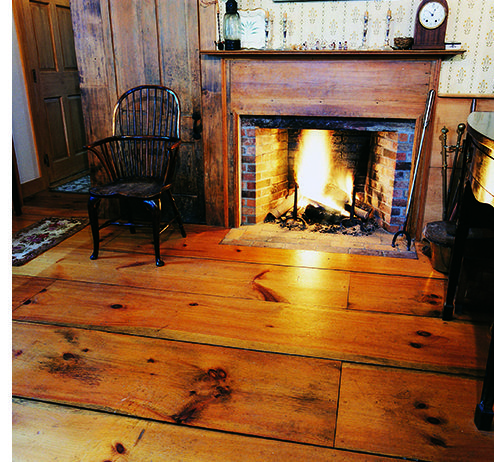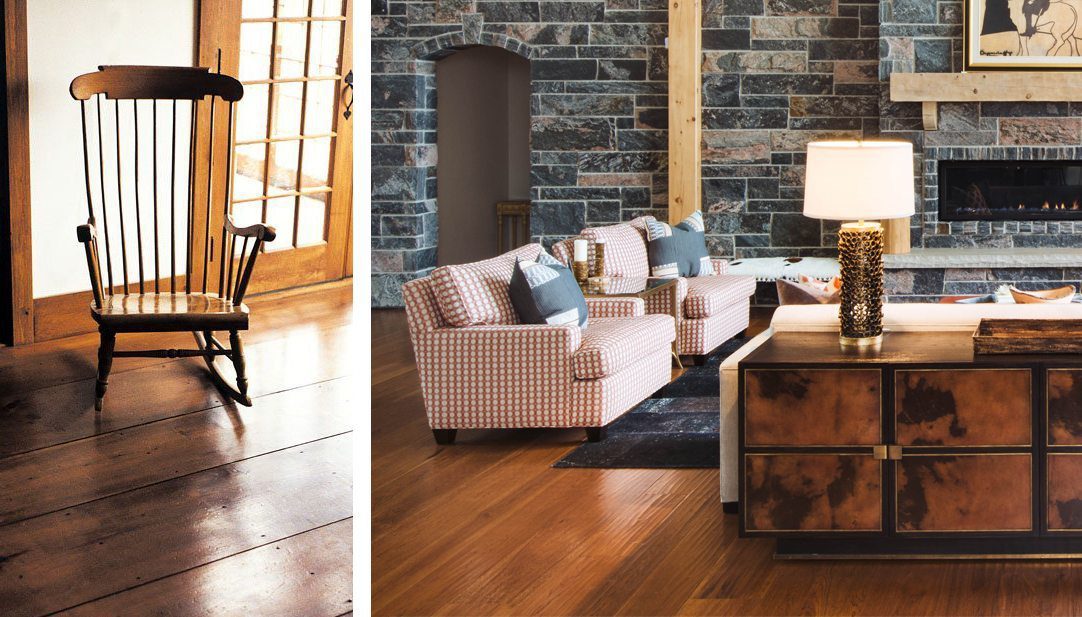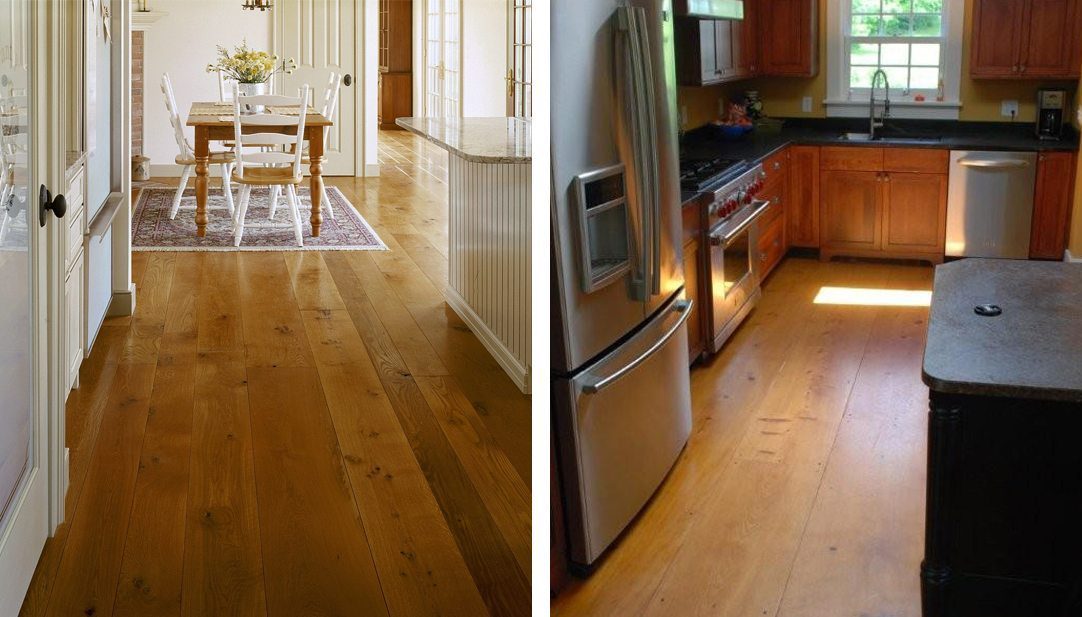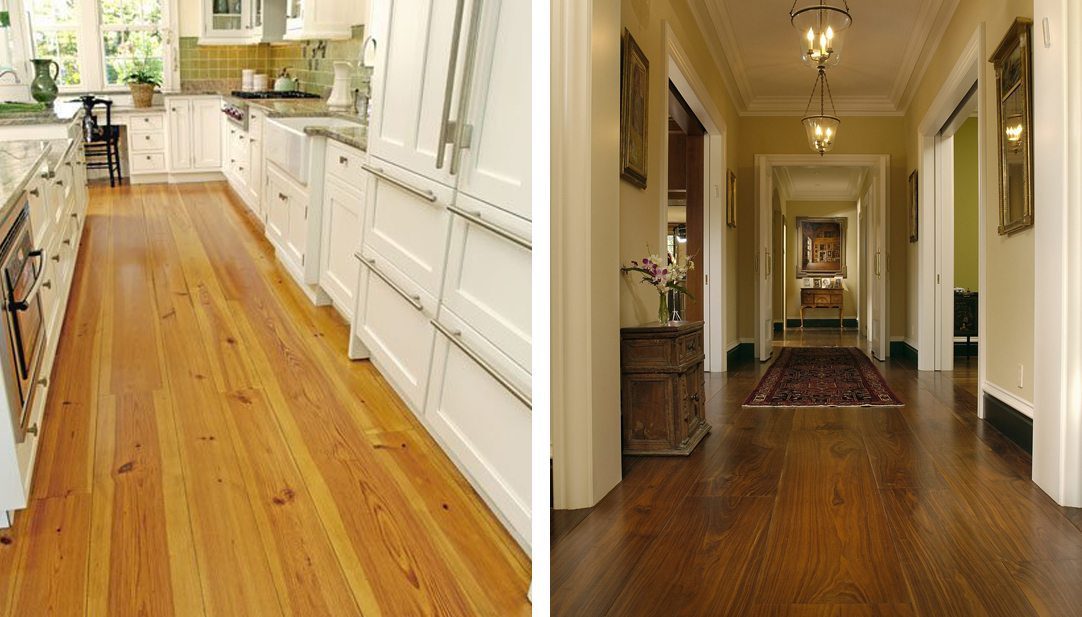Wide plank flooring has been around for a while…and when we say “a while” we mean hundreds of years. What began out of necessity and function, has evolved into a “must have” for interior fashion and a timeless iconic decor element.
Its popularity has never wained and the number of available styles have exploded through the years. Through some of this evolution, one of the design elements so often overlooked, unfortunately, is plank width – to a detriment of wood floors everywhere; this is one of the single most important design elements to any wood floor. Today, we will take a look at the transformative effect that wide plank floors have and how the right seletion can make, or break, your entire design.
Wide plank flooring has been around for a while…and when we say “a while” we mean hundreds of years. What began out of necessity — install something as quickly as possible before the snow falls — and function — make sure it is going to be durable so we don’t have to do it ever again — has evolved into a must have for interior fashion and a timeless iconic decor element.
Its popularity has never waned and the number of available styles have exploded through the years. Through some of this evolution, one of the design elements so often overlooked, unfortunately, is plank width — to a detriment of wood floors everywhere. This is one of the single most important design elements to any wood floor.
Let’s take a walk down memory lane with a look at the early history of wide plank floors and the transformative effect that wide plank floors have on spaces, large, small, residential or commercial.
 Early History
Early History
When the Early New England settlers began harvesting timbers for construction and land development, they discovered they could cut wider, stronger planks with lots of dense vertical grain. This made it possible to build tough, durable floors in their homes quicker with fewer planks. Today, a number of those homes and their wide plank floors still exist.
Squeezed Out by the Building Boom.
Unfortunately, wide plank flooring is not really suited for mass production. When the building boom of the 50’s and 60’s started, the industry shifted to production of the narrow strip wood flooring we all know today. The wide plank floor became something of an oddity at the time. However, even though these narrow wood floors were cheaper to produce, they weren’t always a good fit because the high number of seams made the floors look busy, which in turn made the rooms feel smaller or seriously cluttered. That kind of look can deter from the overall aesthetics of a room, which clients, their designers, architects, and builders, spend hours designing and decorating.
Don’t compromise the look of your entire space with the wrong flooring selection.
Adding a New Dimension to an Old Tradition.
In 1966, wide plank flooring was rediscovered when Carlisle Restorations Lumber began restoring wide pine floors in some of the earliest homes along the Eastern Seaboard. But there were also clients who wanted to create that look that didn’t live a 1700’s New England Farmhouse. So Carlisle Restoration Lumber began handcrafting authentic reproduction quality pine flooring.
This was the birth of Carlisle Wide Plank Floors and the revival of a classic tradition. However, this tradition came with a new twist that was made for modern living as homeowners, designers and architects discovered that these wider, longer planks worked in any style setting, from rustic to contemporary. Although the original concept for wide plank floors was to install flooring as quickly as possible, and with as few boards as possible, today we find that the wide plank floors have a further benefit — they reduce seams to make small rooms feel larger and make a larger room feel well balanced and proportionate.
Viewing the Wide Plank Perspective by the Numbers.
At this point, it’s helpful to define what we mean by “wide plank” and “strip flooring”. On average, wood flooring strips range from 2.25” to 3.5” in width and run about 3’ in length – that is the equivalent of .06 square feet per board.
Carlisle wide wood planks, on the other hand, can range from 4” to 20” in width with the average width typically being 8” – 10” and the length running about 7’ — that is the equivalent of 4.6 square feet per board.
To see how these dimensions can affect the number of seams in a floor, let’s compare the seams in a 20’ x 20’ room.
- Using 3” x 3’ wood strips, you would have about 640 edge and butt seams. That’s a very busy floor that makes the room feel small and doesn’t showcase the wood’s beauty at all.
- Now, with Carlisle wide wood planks that are 8” wide and 7’ in length, the floor would have only 120 seams. That’s over 80% fewer seams than the strip floor. This creates a feeling of much more open space while also displaying the natural beauty of the wood itself.
On average, a Carlisle wide plank floor can reduce the numbers of seams by up to 80% versus strip flooring.
You Have to See It to Believe It
If you have a small room, more seams, make the small space look even smaller and more cluttered. It can be a distraction every time you walk into the room. Let’s take a look at a few examples.
Despite the narrow hallway width, this California Craftsman style home lets the white oak wide plank floor design continue unto the eat-in kitchen, with only nine boards across an opening about 7′ wide.

In a kitchen in Maine, the client chose 13-20″ Wide Eastern White Pine to recreate an authentic New England Farmhouse. Even though the space is only about three feet wide, they still use the 20″ wide boards.
A home on Martha’s Vineyard has a small galley style space in their kitchen, but they still used Heart Pine flooring boards up to 12″ wide.
But wider boards aren’t just for small, casual spaces. Wide plank floors are suitable for any interior design style — even the most modern. A luxurious custom home in California has 10-15″ Wide Plank Walnut flooring even down the narrow gallery hallway.

– – – – – –